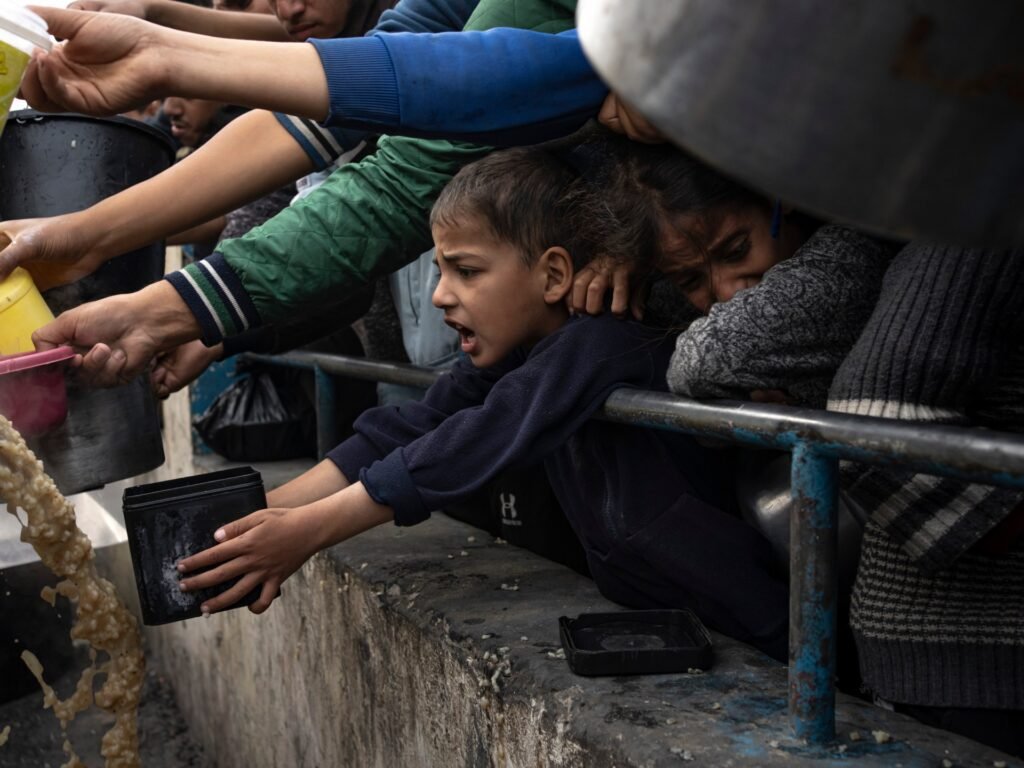The proportion of households affected by severe food insecurity is at an all-time high globally, according to the report.
A United Nations-backed report says Gaza’s entire population of 2.3 million people is facing crisis levels of hunger, and the risk of starvation is increasing by the day.
The proportion of households affected by high levels of severe food insecurity in Gaza is the highest ever recorded globally, according to the Integrated Food Security Classification (IPC) report released on Thursday. ing.
According to the report’s figures, the level of famine in Gaza exceeds even the near-famines that have occurred in recent years in Afghanistan and Yemen.
“Everyone in Gaza is hungry.”
“Things cannot get any worse,” said Arif Hussein, chief economist at the World Food Program.
“I’ve never seen anything happening on this scale and with such speed in Gaza. It happened so quickly in just two months.”
#Gaza
Urgent action is required.Hostile actions such as shelling, ground operations, and sieges against entire populations have resulted in devastating levels of severe food insecurity.
There is a risk of starvation.
Read more
https://t.co/b358hNlY4i pic.twitter.com/e9C155XqAP
— Integrated Food Security Stage Classification (@theIPCinfo) December 21, 2023
A report by 23 UN and non-governmental organizations found that Gaza’s entire population is in food insecurity, with 576,600 people living at catastrophic, or starvation, levels.
“Almost everyone in Gaza is starving,” Hussain said.
“People are not getting enough nutrition and their immune systems are so weakened that a disease outbreak is very close,” he says.
The report said everyone living in Gaza is expected to face high levels of severe food insecurity over the next six weeks.
The 23 government agencies say that in the “most likely scenario” the entire population of the Gaza Strip will be at “critical or worse” levels of starvation by February 7 after four months of war. I predict that. The IPC’s five-tier classification of food insecurity places crisis at stage 3, emergency at stage 4, and catastrophe or famine at stage 5.
“This is the highest proportion of people facing high levels of severe food insecurity that the IPC Initiative has ever classified for a particular region or country,” the report states.
The international humanitarian organization CARE called the numbers “alarming.”
danger of starvation
The humanitarian situation in Gaza has deteriorated rapidly since Israel launched a major military operation on October 7, with massive airstrikes and ground attacks devastating large swaths of the enclave.
“The current situation of intense hostilities and restrictions on humanitarian access, with the risk of famine, is likely to continue or worsen by the day,” the Gaza Strip IPC said.
The IPC sets global standards for determining the severity of food crises using complex technical criteria.
The report warns that the risk of famine is “increasing by the day” and blames insufficient aid to Gaza.
Trucks carrying aid from Egypt have delivered food, water and medicine, but the United Nations says the amount is only 10% of what is needed by the region’s residents, most of whom are displaced.
Aid distribution within the Gaza Strip has been hampered by military operations, inspections of Israeli-requested aid, communications blackouts, and fuel shortages.
Some desperate Palestinians in the Gaza Strip have jumped on aid trucks to secure missing food and other supplies. There are also reports of residents eating donkey meat and of debilitated patients begging for food.
Meanwhile, Israel’s relentless shelling of Gaza has killed more than 20,000 people, 70% of them women and children.
Approximately 1.9 million Gazans, more than 80 percent of the population, have been forced to flee their homes. More than 1 million people are packed into UN shelters.
The war has also led to the collapse of Gaza’s health sector. The World Health Organization said Thursday that only nine of the country’s 36 medical facilities are still partially functional, all located in the south.

